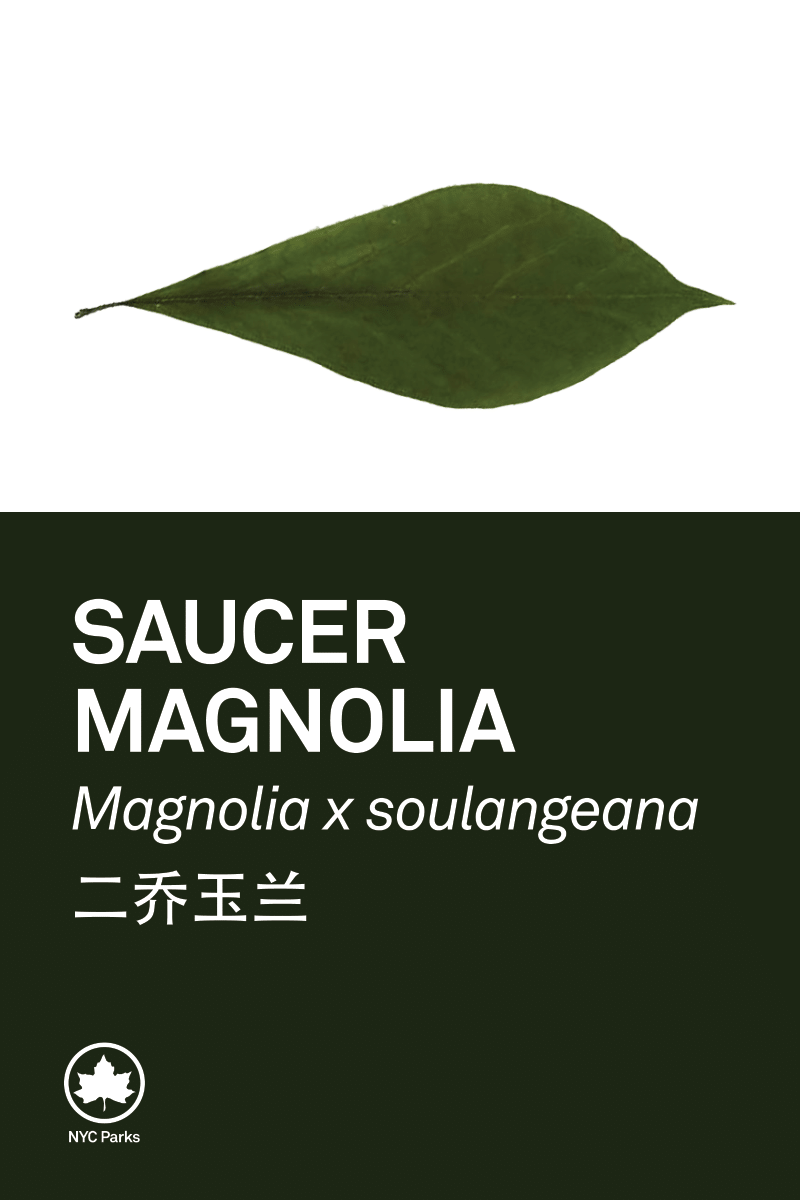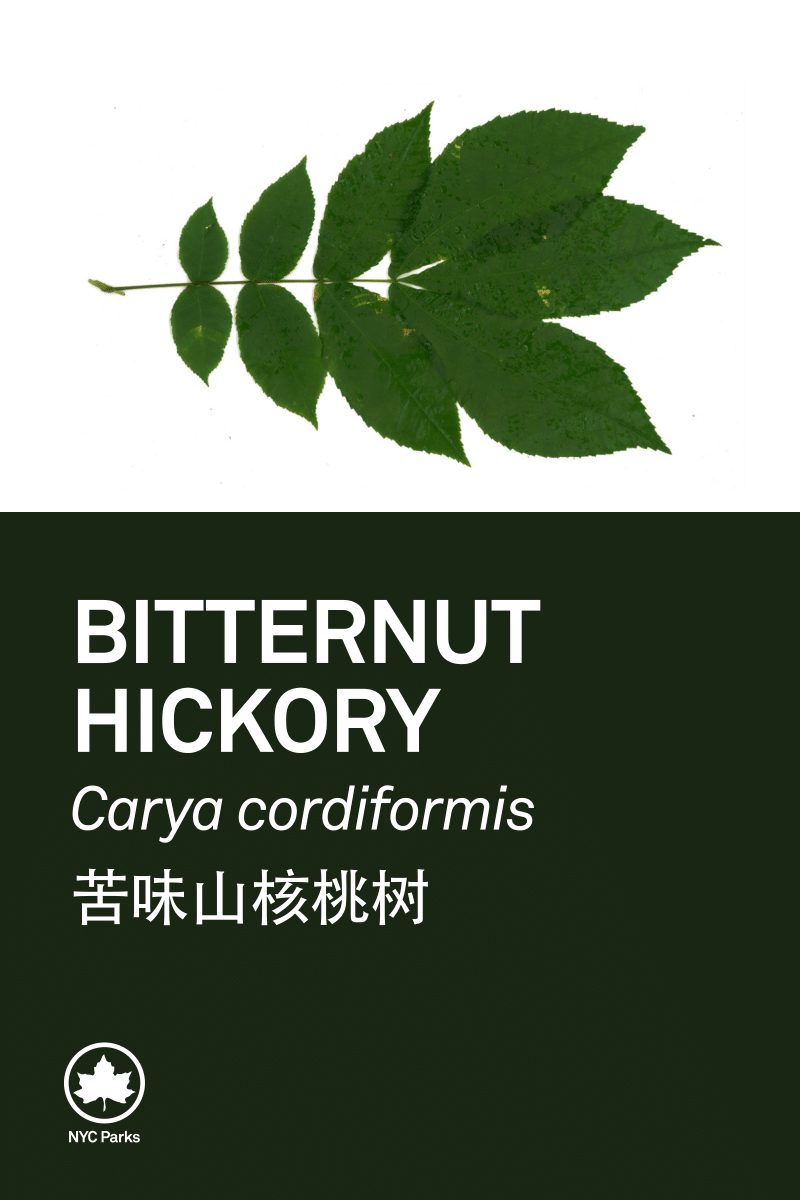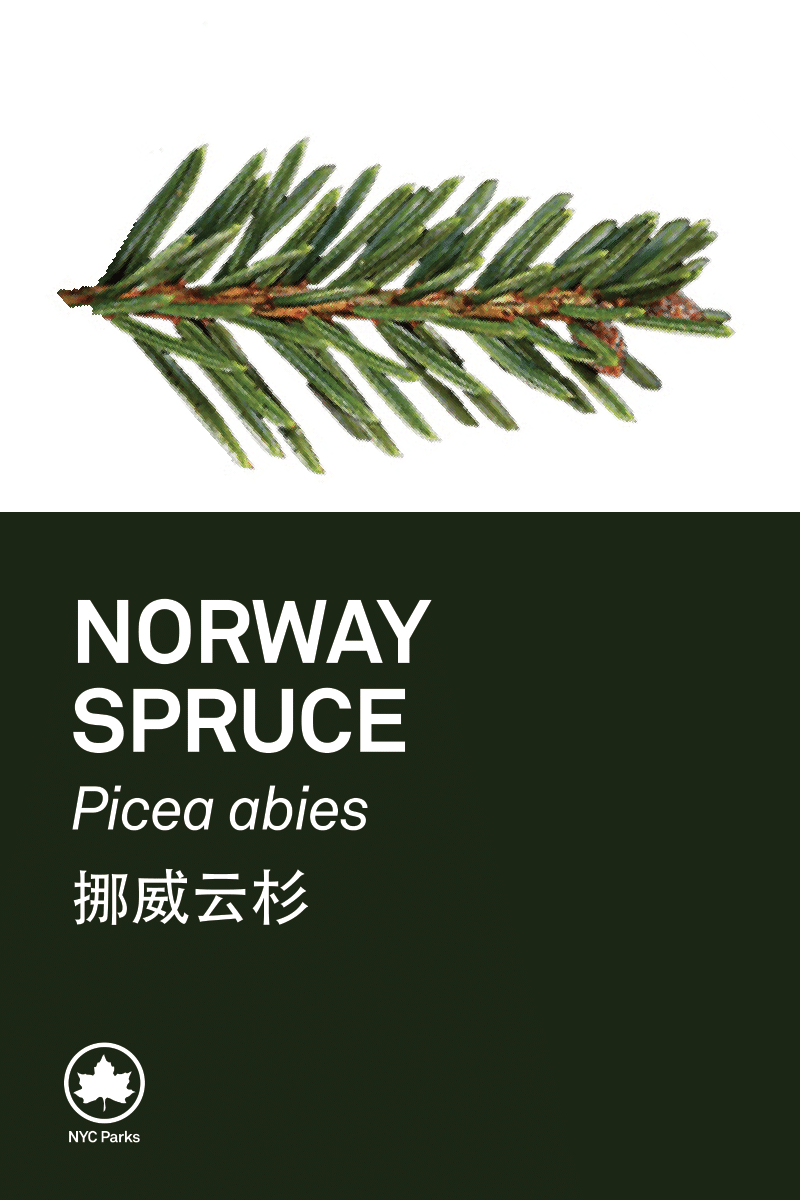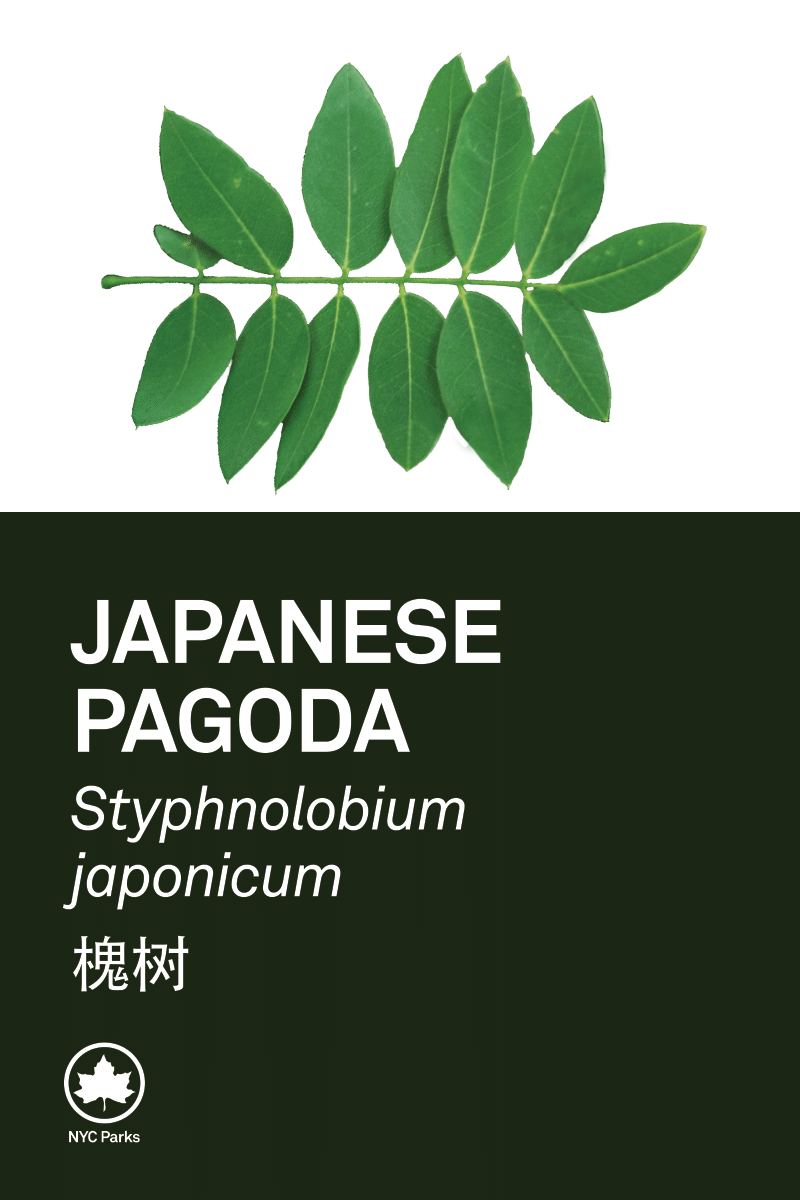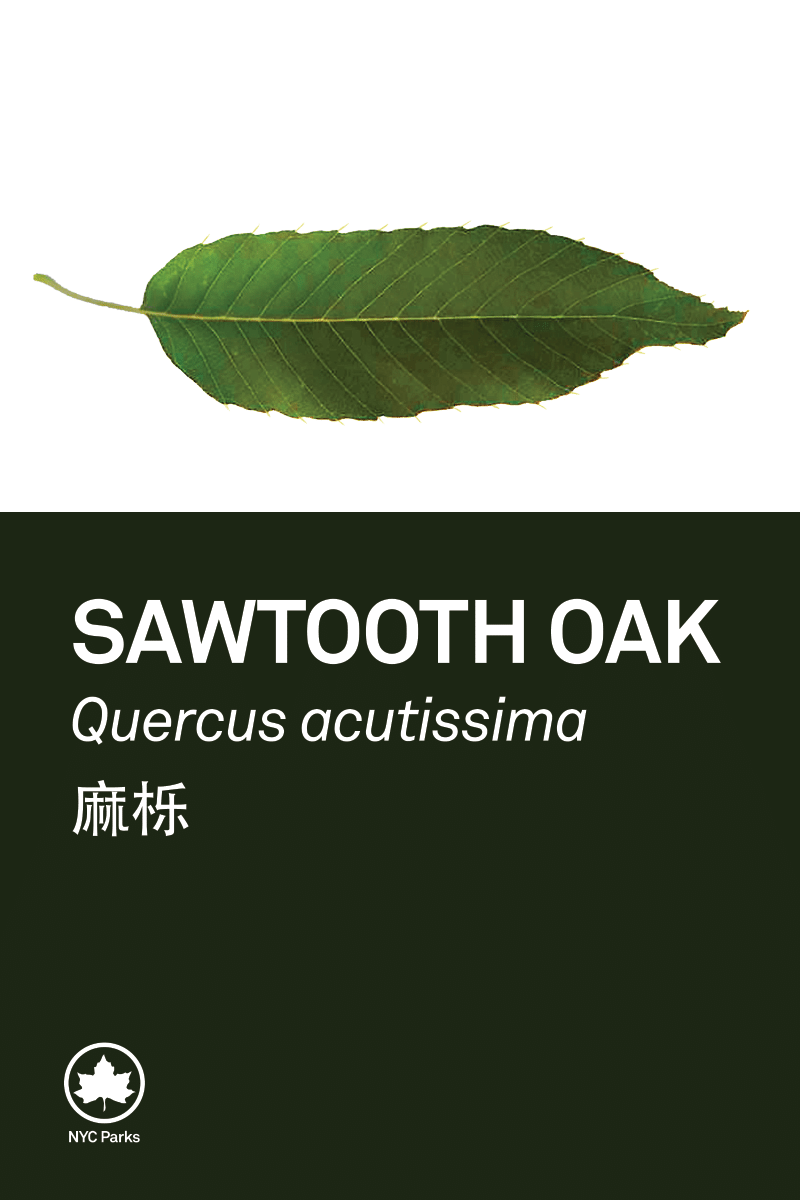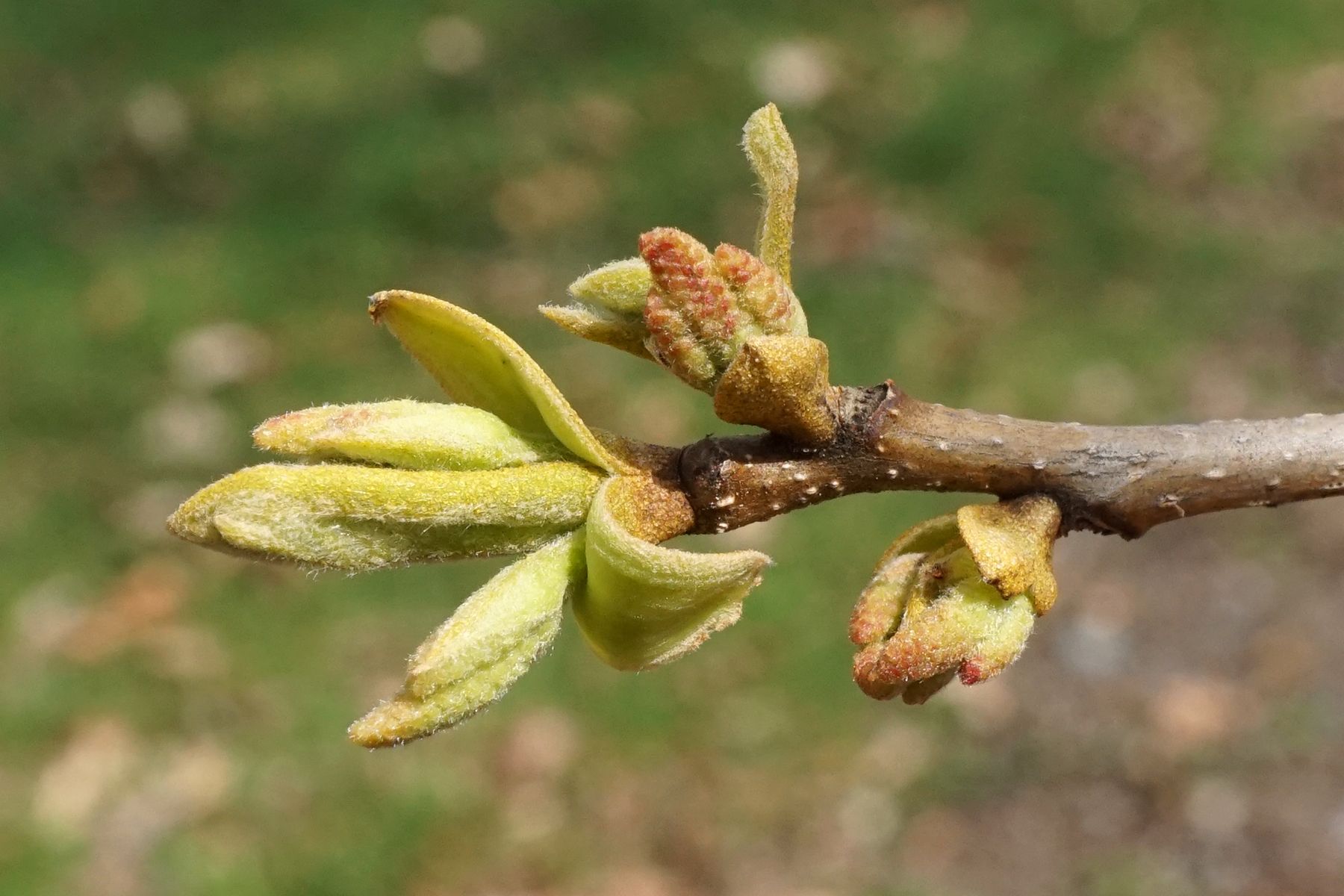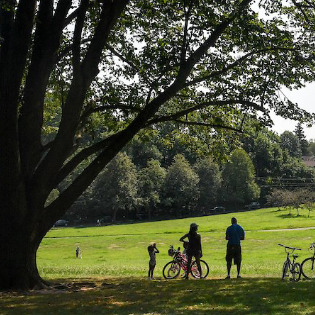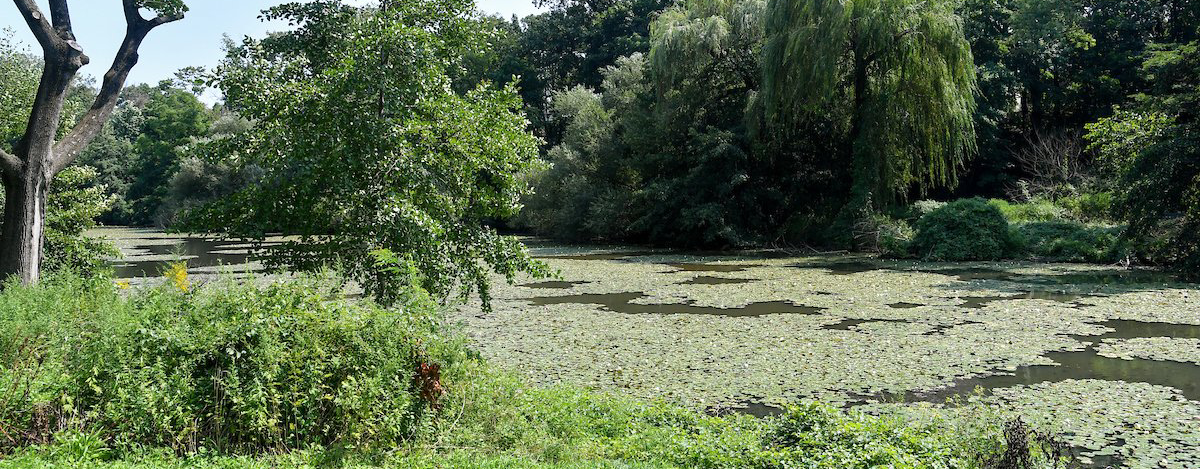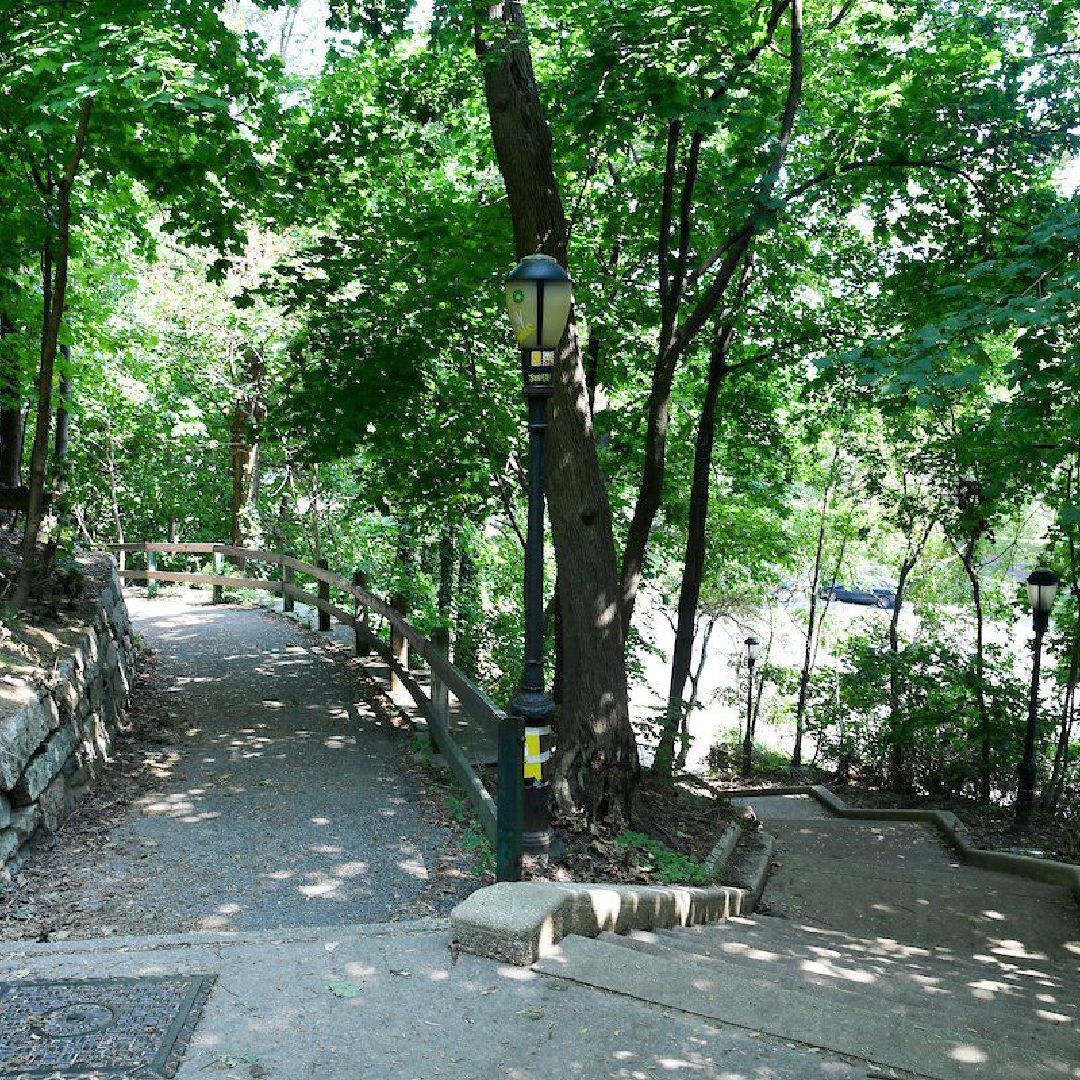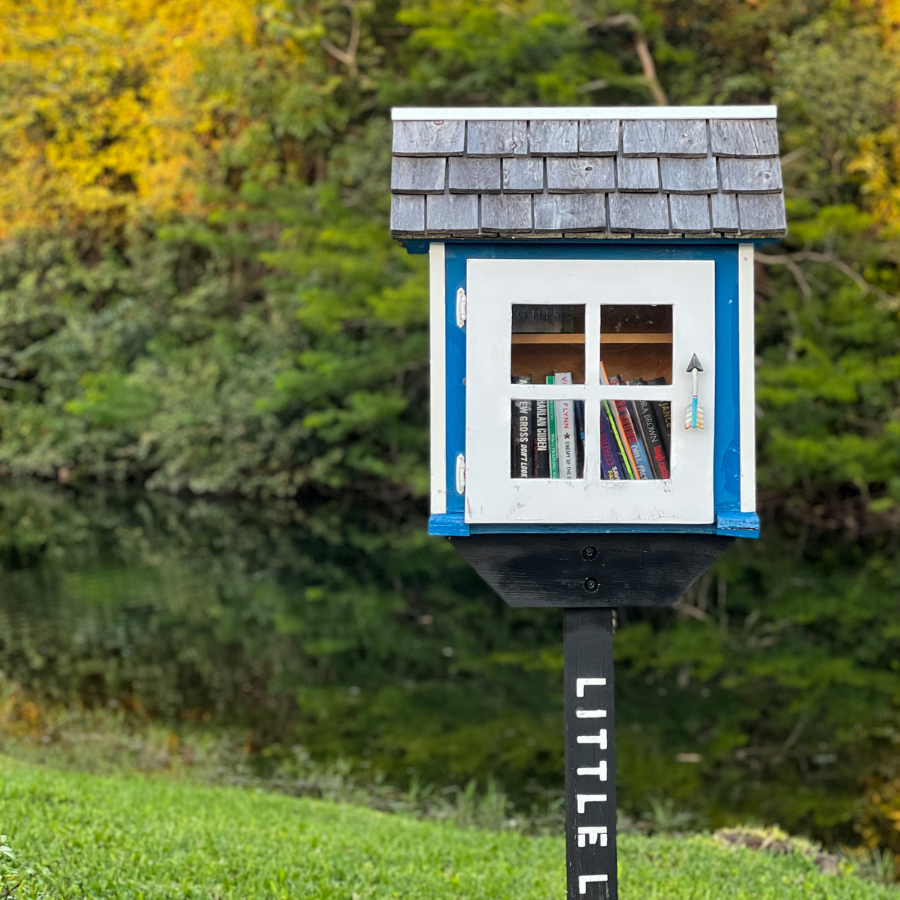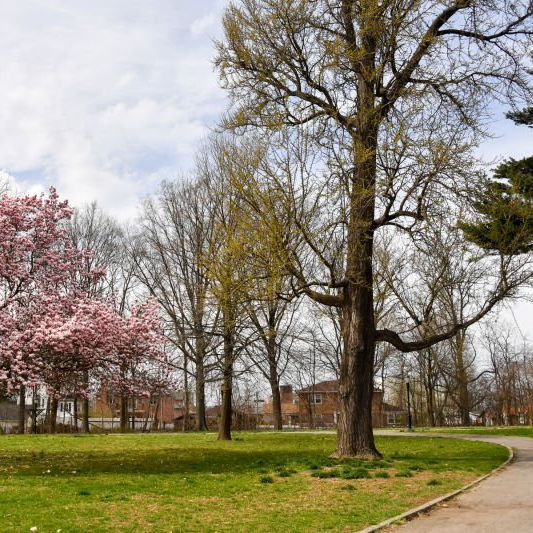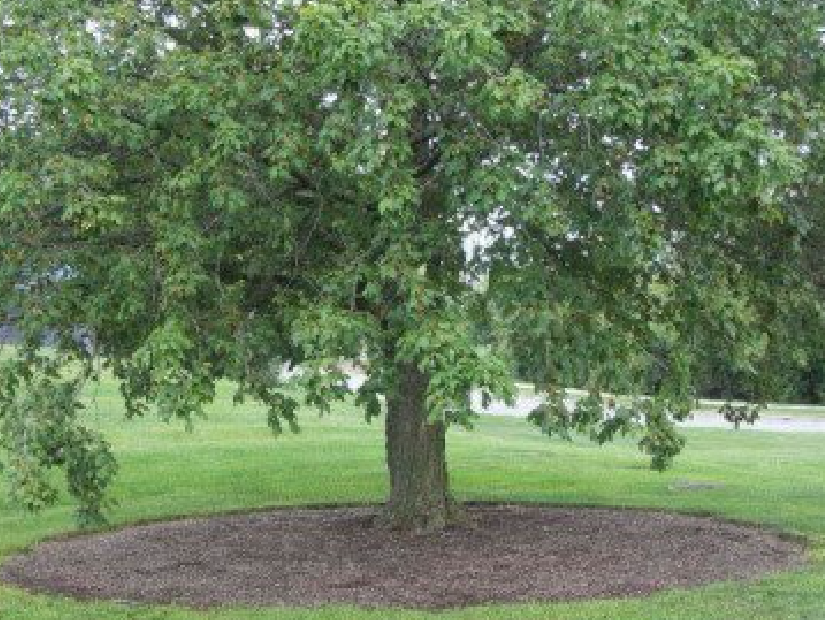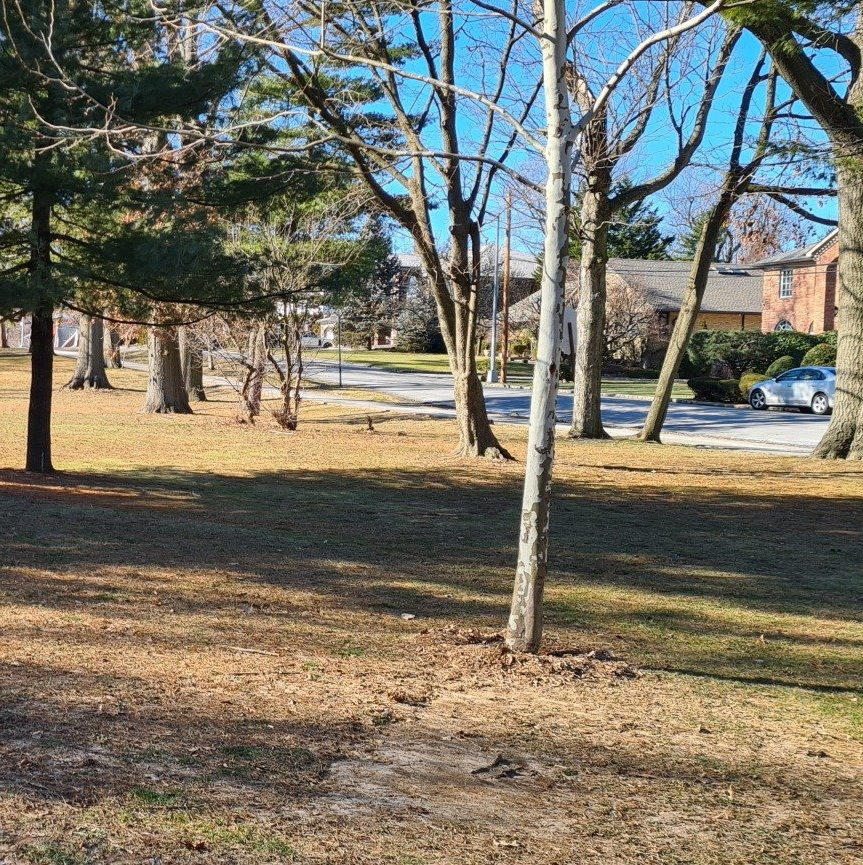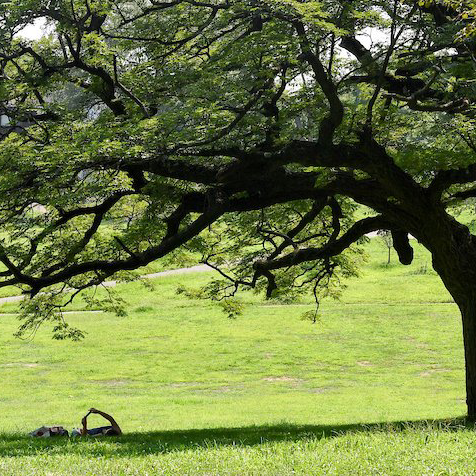Crocheron Arboretum Part II: John Golden
Trees of John Golden Park

Lindsey Marino - grew up in Queens and is a Board Member of Friends of Crocheron & John Golden Park.
The trees that encompass the Level 1 Certified Arboretum within our 62-acre park are made up of more than 30 species and 500 trees. As the 46 th largest park in NYC (for perspective, there are almost 2,000 parks in NYC), the vastness of our trees reflects the incredible stewardship that makes public parks happen. Trees can remain when all else changes, as their longevity can outlive lifetimes. Most trees live to become centenarians, and some are verified to be thousands of years old. This is in part due to their ability to replace damaged or lost organs (both in and out of the ground) and a divided vascular system that can allow part of a tree to survive if the whole one cannot. Take a look at some of our life-long friends of Crocheron & John Golden Park here!
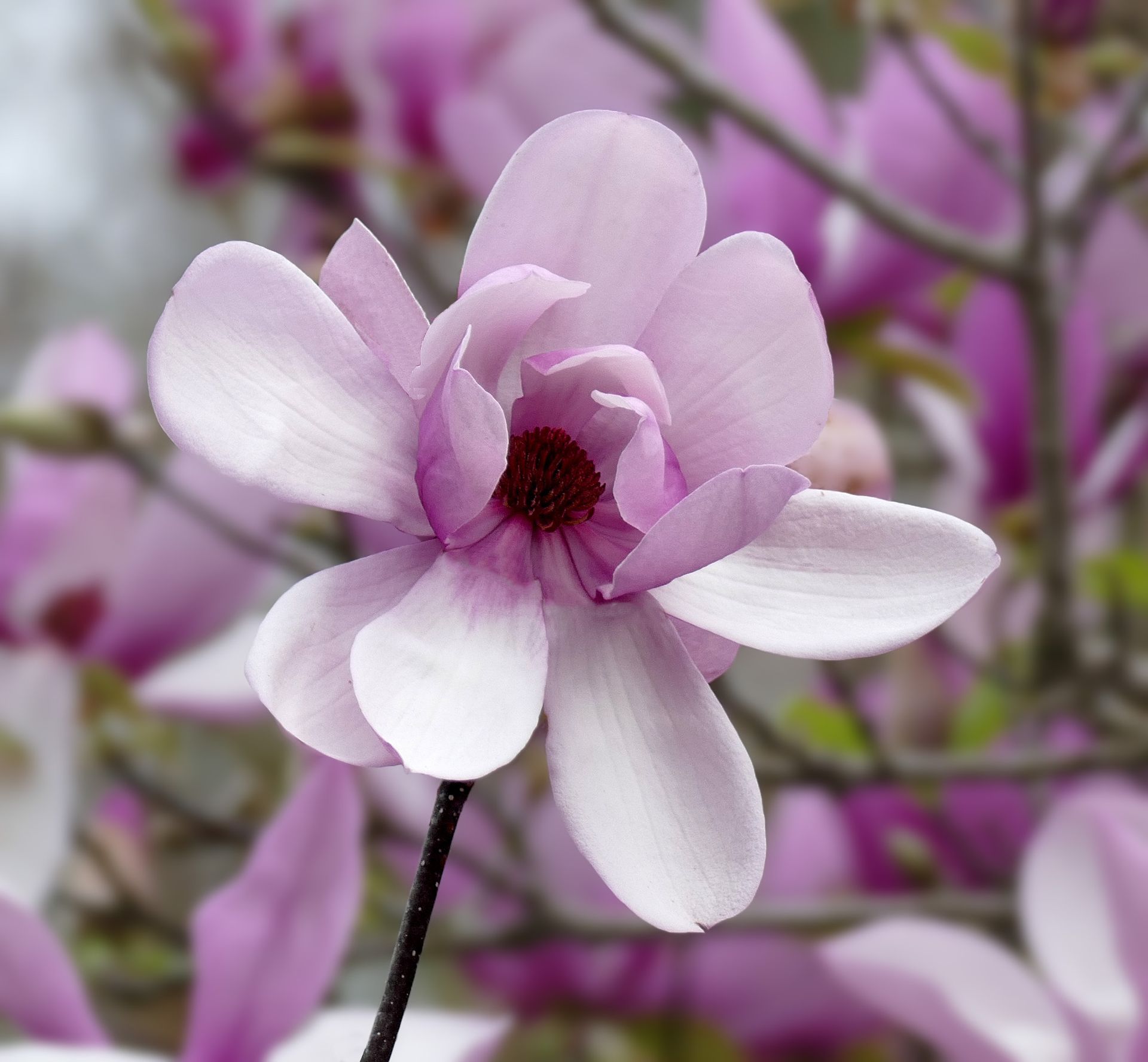
Saucer magnolia, Magnolia soulangeana
Considered the most common and popular magnolia, this deciduous tree can grow up to 25 feet tall with a canopy of similar size. Fragrant flowers (to 8” across) bloom in early spring (late March to mid-April ) before the foliage emerges. Flowers are pink with white interiors. Sparse numbers of additional flowers may bloom sporadically later in spring on new growth, but the later flowers are usually less vigorous and less colorful than those of the primary bloom. This tree is only 200 or so years old, as it is the hybrid of two magnolia trees, the Magnolia denudata and the Magnolia liliifera, both native to China. Etienne Soulange-Bodin, a French retired cavalry officer of Napoleon’s army, was the first to breed to two trees. The genus name “magnolia” derives from 17th century French botanist Pierre Magnol. Hybrids today feature flowers in various shades of white, pink, rose, purple, magenta, and burgundy. Source: Missouri Botanical Garden.
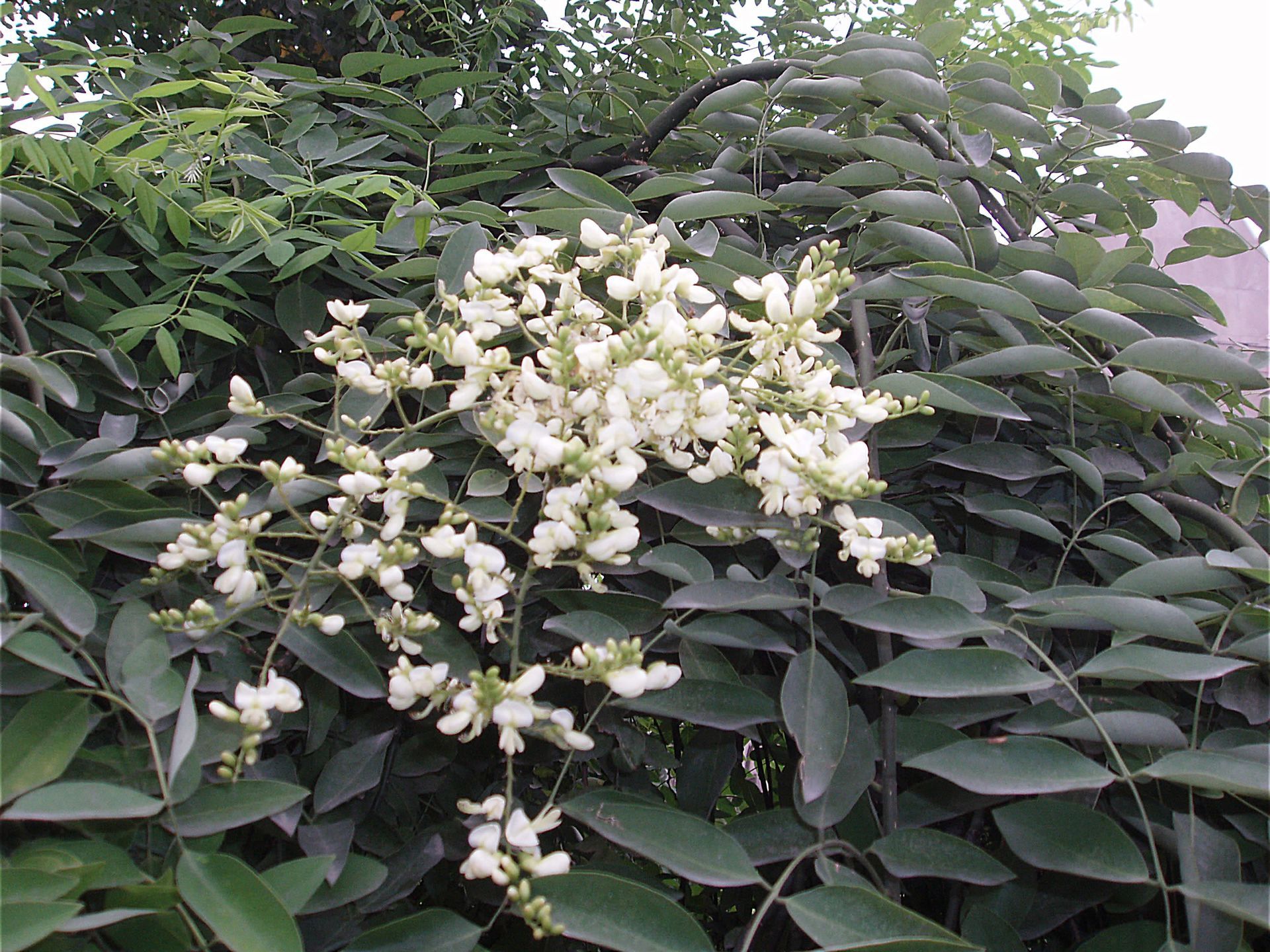
Japanese pagoda tree,
Styphnolobium japonicum
Despite its name, the Japanese pagoda tree does not come from Japan, but originates from China. Also called the Chinese scholar and the Honey tree, they usually grow between 25-35 feet tall but can sometimes reach heights of up to 100 feet. This tree is not long-lived, carrying an average lifespan of 35 years. Some identifying characteristics are its oval-shaped leaflets, wavy ridged gray-brown bark, and shiny green twigs. The tree’s distinct green compound leaves, which range from 6-10 inches long and contain 7-17 oval leaflets, are sought after for their beauty. The tree’s flowers are white, pea-like, and hang in 12-inch-long panicles. They bloom during summertime and are known for their fragrance. Source:
North Carolina Extension Gardener.
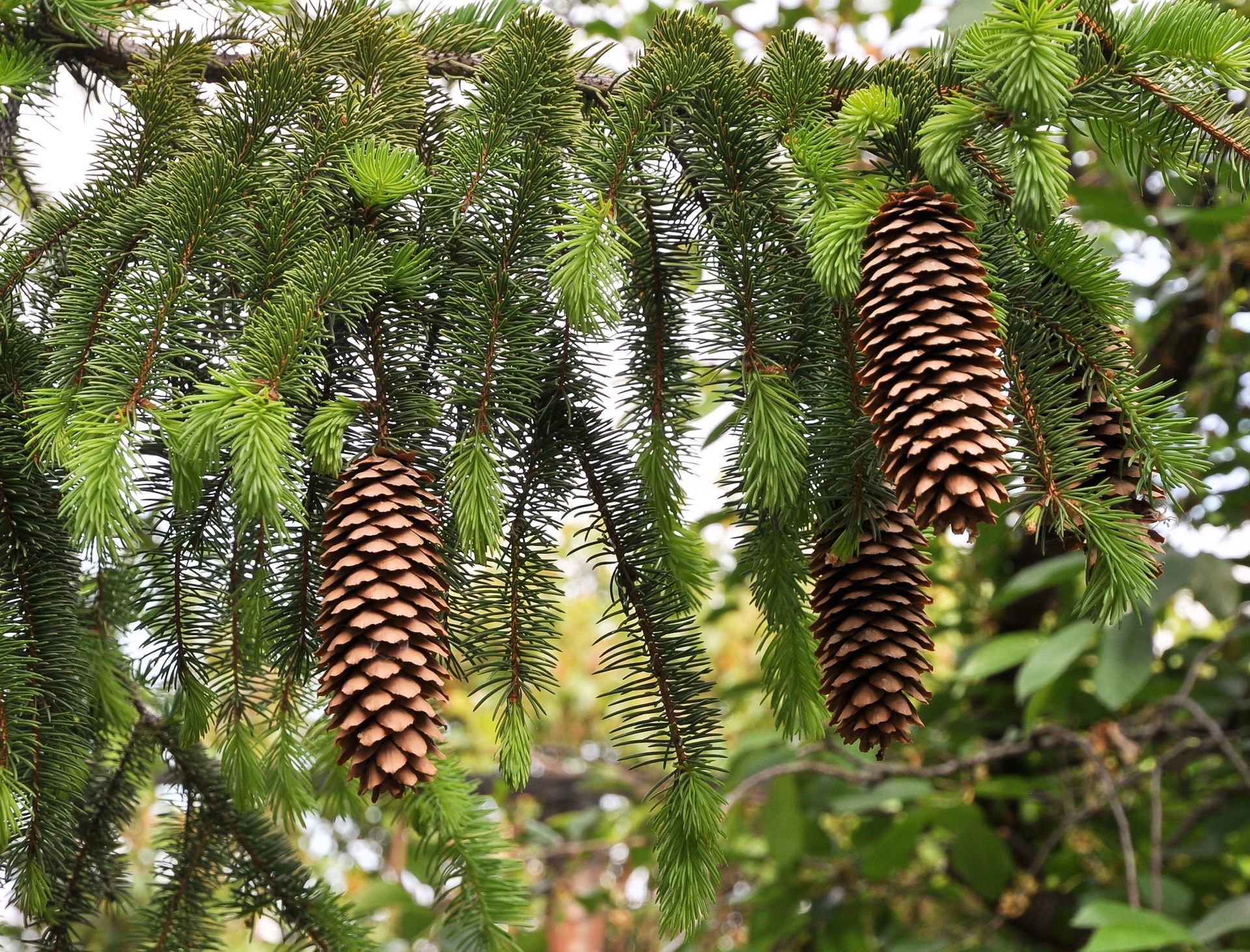
Norway spruce, Picea abies
The fastest growing of all spruces, this large pyramidal tree is found all over the U.S., but is native to Europe, growing from Norway in the northwest and Poland eastward. Despite this, the name is a bit misleading. This tree grew in Eurasia, the Black Forest, and other parts of the continent long before making its way to Norway around 500 B.C. The Norway Spruce grows to an average of 60 feet with a trunk diameter of 3-5 feet. Due to its close relation to the Siberian Spruce, they hybridize naturally and freely with each other. This spruce also has the largest cones of any other spruce, reaching 4-6 inches in length. Norway spruce trees support a wide variety of wildlife. They are important as winter cover for animals and provide a solid roosting foundation for owls and hawks. Squirrels also prefer the seeds of Norway spruce pinecones over other spruces. This spruce species lives to about 100 years.
Source: ArborDay.com Shop | Wikipedia.

Sawtooth oak, Quercus acutissima
The Sawtooth oak is native to Japan, Korea, China and the Himalayan Mountain range, but found its way into the Eastern part of the United States in the 1920s including Florida, Missouri, New York, Alabama, and Pennsylvania. These trees reach a mature height of about 70 feet with a trunk diameter of about 5 feet. They are durable and can adapt to a wide range of soil and climate conditions. Sawtooth oaks produce acorns at a very young age, providing food for many kinds of wildlife, especially wild turkeys. However, the bitterness of the acorns makes it less desirable, usually only being eaten when other food sources have run out. This oak probably derives its name from the distinctive sawtooth-edged leaves it produces. These trees grow at a faster than average rate, which helps it compete against native trees. Due to this, the Sawtooth oak is seen as an invasive species in some areas and states, such as Louisiana. Source: Wikipedia.
Bitternut hickory, Carya cordiformis
Native to North America, this large tree is best reserved for larger landscapes and spaces. Reaching a mature height of 60-70 feet with a 25–35-foot canopy, these trees have a crown of ascending branches and a lower canopy of dangling branches. As a member of the Walnut family, it is related to other Hickory and Walnut trees. As the name suggests, the nuts from these trees are bitter, and ill-fit for consumption. As one of the fastest growing and largest hickory, it is also the shortest-lived hickory, living to about 200 years. The dark brown close-grained hardwood is highly shock resistant which makes it excellent for tools. The Latin name “condiformis” refers to its heart-shaped leaves.
Source: USDA Forestry Services.

